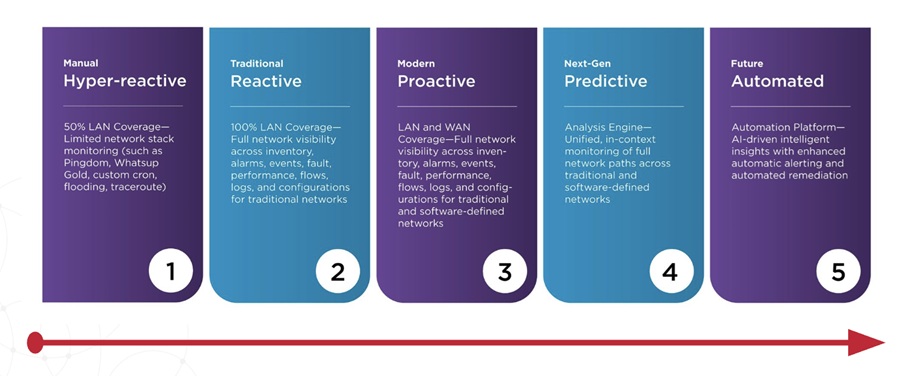
In the old days of monolithic architectures, IT operations teams could manage service-disrupting incidents themselves. But these architectures have evolved, and the systems our digital economy relies on today are too complex and produce too much data for human operators to monitor, let alone fix. Artificial Intelligence for IT Operations (AIOps) solutions automate system monitoring and remediation strategies to help DevOps and SRE teams ensure that services and apps are continuously available.
If legacy tools are insufficient and AIOps streamlines DevOps and SRE teams’ tasks, shouldn’t adopting AIOps tools be a no-brainer?
The missing link is typically trust. Can highly trained IT pros trust AIOps to monitor their dynamic, interconnected systems?
And can this technology offer accurate and effective mitigation solutions?
The reason for worry is understandable — if automated systems falter, human operators bear the burden.
But the reality is: the disparate data sources, vast amounts of information and incidents that arise from such large datasets are beyond what a human mind can reasonably handle. Modern systems require modern automated solutions.
Let’s explore how IT leaders can build trust in AIOps tools and eliminate toil from their teams in the meantime.
Get to Know Your AIOps Tool
Effective, properly integrated AIOps tools can proactively look for problems, determine the root cause of the incident and fix the potentially service-impacting issue. The result is a reduction of manual toil for DevOps and SRE teams. But these teams shouldn’t worry about job security: humanless automation is far from a reality. After all, the remediation strategy can be worse than the incident, and untangling that issue requires human rationalization. The overall goal should be rapid root cause analysis and accurate remediation strategies with human authorization (and automation when and if it makes sense). As the “paradox of automation” says, "the more efficient the automated system, the more crucial the human contribution of the operators."
As evidenced by GigaOm’s Radar for AIOps Solutionsreport, AIOps tools vary in their approaches to observability, integrations and self-healing functions. Even vendors’ use of the term “AI” differs. While some AI-driven solutions provide automated neural capabilities, other allegedly AI-based systems merely operate on rules-based heuristics and rely heavily on human IT teams.
If teams don’t know what they’re getting with an AIOps tool, they likely question if they can trust the technology at all. The short answer is: not necessarily.
AIOps tools based on rules and models can only handle a pre-established set of rules programmed into the IT infrastructure. This rigidity leads to an obvious problem. Our modern systems constantly change, and when those changes occur, teams need to alter the programmed rules too. Root cause analysis also becomes harder to identify and rectify automatically, putting the onus back on the human operators and garnering little value from the automation.
Unlike rule- and model-driven AIOps solutions, evidence-driven tools are better suited to keep pace with ephemeral modern systems. Instead of relying on fixed rules and models, evidence-based solutions respond to what the system is actually experiencing. This approach is far more beneficial to DevOps and SRE teams in finding the root causes and deploying self-healing. For example, empirical tests have shown that advanced natural language processing can provide more accurate and scalable results than rules, with substantially less maintenance overhead.
Build Trust in Your AIOps Tool
Just as humans need to build trust with each other, IT teams need to build trust with their AIOps tool. Trust-building in AIOps should be the same as it is in humans — with an incremental “truth and proof” approach that allows people to evaluate data and experience results before moving on.
IT teams should start by deploying an AIOps tool and connecting it to application and service data sources. With native or third-party tool integration capabilities, the AIOps tool should connect to the DevOps toolchain or CI/CD pipeline to automate workflows and the bidirectional transfer of data and notifications. Once the tool is implemented, teams should observe the initial root cause analysis and outputs to determine the solution’s success or failure.
Did the tool surface useful information and provide context to the data?
Will this solution move teams closer to improved service assurance?
While AIOps tools can streamline the tasks facing DevOps and SRE teams, it doesn’t completely replace human operators. Human reasoning is still at the core of sound operations. But AIOps tools can eliminate human toil, giving IT teams time to do what they do best: innovate new technologies.
As the AIOps tool racks up more wins, teams will realize the tool’s value and trust will naturally follow. Then, DevOps teams can take the solution beyond incident remediation and into Value Stream Management (VSM) that governs businesses’ value streams from the inception of an idea to the ultimate outcome — the customer experience. AIOps enables proactive solutions that reduce mundane, time-consuming work for internal teams and provide next-level customer experiences.
DevOps and SRE teams can start their AIOps journey with trust-building, getting hands-on experience with the tool and judging how much value it generates for internal and external audiences. With an incremental approach to deployment and testing, a trusted AIOps tool can eliminate significant human toil and unlock time to keep up with unceasing digital transformation.


